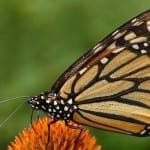
Start Flower Seeds Indoors and Get a Head Start On Gorgeous!
Your garden may not exactly be bursting with color this time of year, but don’t miss out on this prime time to buy flower seeds. Growing flowers from seeds indoors will save you money compared to buying plants and help your garden get a head start on the blooming season.
Flowers add color, fragrance, and personality to your outdoor spaces, and some flowers can attract butterflies or hummingbirds, make homemade potpourri, or even add spice to your meals.
Planting a combination of annuals and perennials will fill your garden with various gorgeous blooms from spring until fall. So why wait to start putting together the highlight of your outdoor living space?
Read on to learn about 4 beautiful flowers that you can start from flower seeds indoors while the frost is still on the ground.
Moonflowers
This annual vine gets its name from its gorgeous, pure-white blooms. The blooms open in the evening and close just after dawn, which makes the moonflower (Ipomoea alba) perfect for your moon garden.
The white flowers seem to glow in the moonlight and will attract hummingbirds during the day. Moonflowers require very little care and will grow on a trellis to 6 to 15 feet.
They also have a long blooming season, which runs from spring through fall. To get these beautiful blooms off to an early start, start seeds indoors 4 to 6 weeks before the last expected spring frost for your USDA hardiness zone.
Soak the seeds overnight in warm water before planting, and germinate them in a room with a temperature range of 65 to 85 degrees Fahrenheit and a good source of sunlight. You should start to see sprouting in 4 to 7 days.
After the risk of frost has passed, plant the seedlings along a trellis in an area that receives full sunlight and enjoy these exotic blooms until fall’s first frost.
Sunflowers
Sunflowers (Helianthus annuus) get their name because they keep their “faces” pointed towards the east, where the sun rises. These distinctive annual flowers are native to North America, and the common variety grows to a height of 6 to 10 feet.
They will make a beautiful border along the eastern side of your house and can also be grown in groupings or containers. The seeds are delicious and high in protein and healthy fats.
Blooms can be orange, red, or classic yellow. To start sunflowers indoors, plant seeds in individual peat pots, with 2 seeds per pot. Start the seeds 2 to 3 weeks before your area’s last expected frost date.
Make sure to discard the smallest sprouts before transplanting outdoors. For regular-sized sunflowers, place plants 2 feet apart, in rows 3 feet apart.
Plant sunflowers where they will get plenty of sunlight.
Bee Balm
Bee balm (Monarda didyma), also called bergamot, is a perennial flower that grows well in a large portion of the US: it’s suited for USDA hardiness zones 4a to 9a. Its fragrant red, pink or salmon-colored blooms attract hummingbirds and butterflies and make good dried flowers for potpourri.
Plants grow to a height of 24 to 48 inches and make attractive borders or groupings. To germinate bee balm indoors, plant seeds in February, barely covering the seeds with soil.
Bee balm germinates best at a temperature of 60 to 70 degrees Fahrenheit. Transplant the seedlings outdoors after the last frost, spacing them about a foot apart.
Bee balm tends to spread, so be prepared to thin the plants when needed. Bee balm grows well in full sun or partial shade.
As the name suggests, bee balm will attract bees, so you might not want to plant these flowers in high foot traffic areas.
Purple Coneflowers
Purple coneflowers (Echinacea purpurea) are hardy, drought-tolerant perennials that produce large, pink, or purple daisy-like blooms. They are well suited for USDA hardiness zones 4a through 9a and grow best in full sunlight.
Purple coneflowers grow 24 to 48 inches tall and make attractive borders or flower groupings. These flowers are popular with nature lovers because they are eye-catching, hardy, and attract butterflies and hummingbirds.
To grow coneflowers from seed indoors, start seeds 8 to 10 weeks before the last frost. Sow the seeds 1/8-inch deep in the seed-starting formula and cover 1/4-inch deep with fine soil.
Your seeds should sprout in 10 to 20 days. When the seedlings have at least 2 pairs of true leaves, transplant them to larger pots. Move the pots to a sheltered area outdoors one week before transplanting them into the garden.
This will allow the flower seeds and plants to become accustomed to outdoor conditions.
Happy sprouting!
Learn more about forcing flower bulbs during winter! Click here.
Photos By RI, Rob Duval, Eran Finkle













